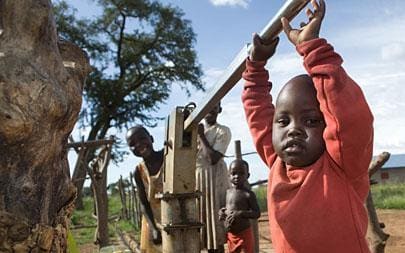Children who are forced out of school and into labour to help their families are denied the opportunity to acquire the knowledge and skills needed for gainful future employment, thereby perpetuating the cycle of poverty. ONE of the most pervasive fundamental human rights violated in Zambia is child labour though most people express the ignorance of it. If not controlled, it can completes hinder the development of a child leaving them with no hope of making it in life.
Child labour is work that is mentally, physically, socially or morally dangerous and harmful to children; and interferes with their schooling. In other words, child labour is work that denies children the opportunity to go to school.
The Zambian government, civil society organizations and the church are all advocating for anti child labour as it is a violation of the children’s rights.
Children who are forced out of school and into labour to help their families are denied the opportunity to acquire the knowledge and skills needed for gainful future employment, thereby perpetuating the cycle of poverty.
Child labour constitutes a key obstacle to achieving universal primary education and other Millennium Development Goals in Zambia. It is not only harm to the welfare of individual children, but also slows broader national poverty reduction and development efforts.
Understanding Children’s Work (UCW) in Zambia, 2009 Report indicates that involvement in work appears to interfere both with children’s ability to attend school and to perform effectively. The attendance of working children lags behind that of their non-working counterparts at every age in terms of grade progression.
Children’s levels of educational attainment and literacy are generally low, at least in part due to the demands of work they are forced to do mostly by family members.
International Labour Organisation(ILO) Assistant Research for Monitoring and evaluation, Shebbah Hamusimbi said almost 10 percent of 9-17 year-olds, over 280,000 in absolute terms, have never attended school.
She said a further 149,000 children from this age group with past schooling experience (but not currently enrolled) are unable to read and write. These figures underscore the importance of expanding and accelerating on-going efforts in the area of remedial education.
However, children with little or no schooling will be in a weak position in the labour market, at much greater risk of joining the ranks of the unemployed and the poor.The survey also revealed that Child labour is common in agriculture, small mining industries and generally in the informal economy.
Ms. Hamusimbi said over 90 percent of children were working in agriculture, forestry and fisheries/ small scale mining. The prevalence rates are higher in the rural areas and shanty compounds of the urban areas where they engage in farm work, cattle herding or drawing water in heavy containers.
The major causes of child labour include, poverty, vulnerability to economic shocks, place of residence (rural concentration);HIV/AIDS, Illiteracy, Drug abuse, peer pressure, inadequate education facilities, unemployment levels.
The most vulnerable children at risk of child labour are orphans, vulnerable children, children from poverty stricken households, and children from vulnerable communities.
As the World commemorates World Day Against Child Labour(WDACL) on June 12, 2013, Let us advocate for change in order to eliminate all forms of child labour as it is the hazardous to children.

